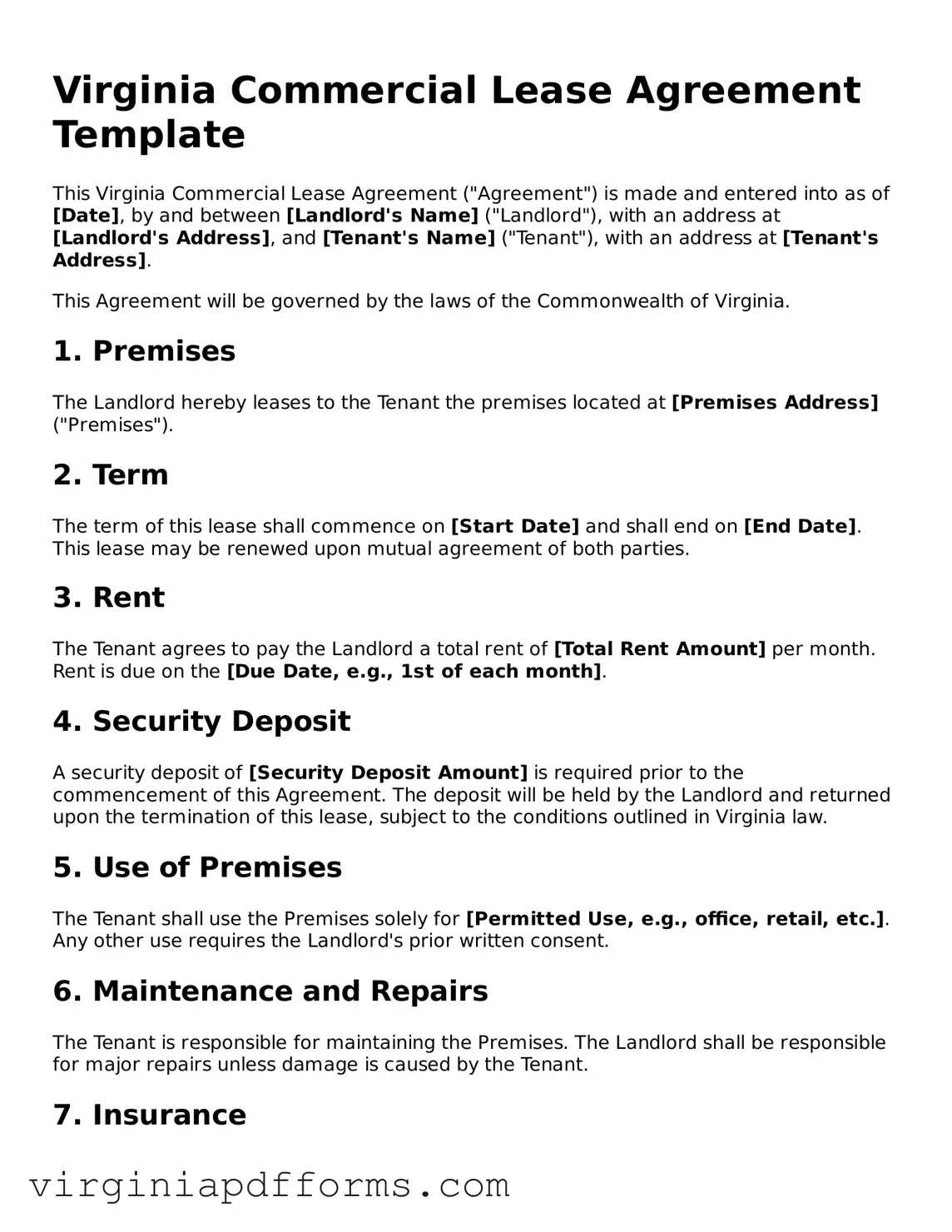Attorney-Approved Virginia Commercial Lease Agreement Document
The Virginia Commercial Lease Agreement is a legal document that outlines the terms and conditions under which a landlord leases commercial property to a tenant. This form serves to protect the interests of both parties and ensures clarity regarding rental terms, responsibilities, and rights. Understanding this agreement is essential for anyone involved in commercial real estate transactions in Virginia.
Access My Document Now
